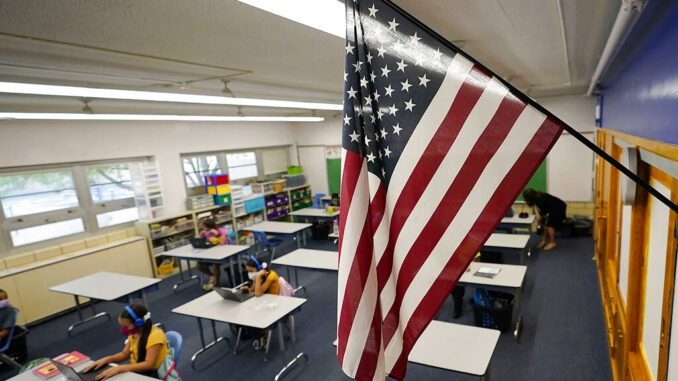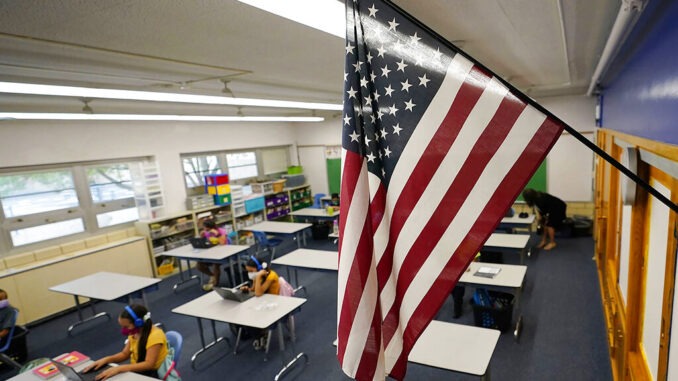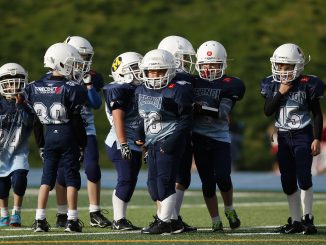

RALEIGH — A pre-publication release of a study to be published in the Journal of American Pediatrics looks at COVID-19 transmission in schools in North Carolina. The findings may help answer the question of whether K-12 schools can be fully reopened in the second semester for in-person instruction using the current safety measures.
The study, titled Incidence and Secondary Transmission of SARS-CoV-2 Infections in Schools, was produced by 13 doctoral and medical professionals associated with a number of medical organizations in the Triangle area.
Organizations involved include Duke Clinical Research Institute, Duke University School of Medicine, Duke’s Department of Pediatrics and Department of Population Health Sciences, the ABC Science Collaborative, Frank Porter Graham Child Development Institute, the University of North Carolina at Chapel Hill and Chapel Hill’s School of Medicine.
The study spanned 11 school districts and nearly 100,000 students and staff that were open for nine weeks of in-person instruction. The researchers tracked secondary transmission of SARS-CoV-2, the cause of COVID-19, and found that “within-school infections were extremely rare.”
“In the first 9 weeks of in-person instruction in NC schools, we found extremely limited within-school secondary transmission of SARS-CoV-2, as determined by contact tracing,” the study’s conclusion states.
The study also found “No instances of child-to adult transmission of SARS-CoV-2 were reported within schools.”
Gov. Roy Cooper closed all K–12 public schools to in-person instruction on March 14, 2020. Schools remained closed for the remainder of the 2019-2020 school year.
In mid-July of last year, Cooper made the announcement that schools could open under the state’s Plan B, which is a mix of remote and in-person instruction. He also left it up to the districts if they wished to remain on Plan C, which is remote instruction only.
The impact of the closures on students has been concerning to many. At the final meeting of the legislature’s committee dealing with COVID-19 education issues, officials with the State Board of Education and Department of Public Instruction revealed 19% of students had not regularly been attending classes. Additionally, attendance data indicated the statewide average daily membership (ADM) had fallen by over 27,000 public school students. At the end of December, state education officials estimated about 10,000 to 15,000 public school students cannot be accounted for this school year.
In August 2020, 56 of the state’s 115 school districts partnered with the ABC Science Collaborative, a joint project of Duke University and the University of North Carolina at Chapel Hill. The goal of the partnership was to implement the appropriate mitigation measures to prevent transmission of the virus and then share what was being learned.
Out of the 56 participating districts, 11 were open for in-person instruction for all nine weeks of the first quarter. Superintendents in those districts agreed to report on primary and secondary cases collected each week from schools over the fall quarter, spanning Aug. 15 through Oct. 23.
The results from that quarter showed 773 community-acquired infections documented by molecular testing out of the more than 90,000 students and staff. Using contact tracing methods, health departments found an additional 32 infections were acquired within schools.
N.C. Department of Health and Human Services (NCDHHS) state health director and chief medical officer Dr. Elizabeth Cuervo Tilson told the N.C. State Board of Education last fall that “we are not seeing schools as a big driver of cases,” and that children “have relatively low rates of infection and are not driving our increases.”
More recently, at the January meeting of the N.C. State Board of Education, a presentation by NCDHHS Chief Deputy Secretary Susan Gale-Perry noted that DHHS did expect the number of COVID-19 cases to keep rising, calling it a “post-Christmas spike,” but that the number of clusters in K-12 schools was “relatively low.”
Two other studies, one in Norway and one in Sweden, have also emerged with relevant findings with regards to COVID-19 and school-aged children.
A study conducted by the Norwegian Institute of Public Health in Oslo from August to November 2020 traced all contacts of school children between the ages of 5 and 13 diagnosed with COVID-19. These children were tested twice and were quarantined in Norway’s two counties that had the highest viral spread rates.
“This prospective study shows that transmission of SARS-CoV-2 from children under 14 years of age was minimal in primary schools in Oslo and Viken, the two Norwegian counties with the highest COVID-19 incidence and in which 35% of the Norwegian population resides,” the Norwegian study says.
The Norwegian study also noted results showed “when symptomatic children were asked to stay home from school, there were < 1% SARS-CoV-2–positive test results among child contacts and < 2% positive results in adult contacts in 13 contract tracings in Norwegian primary schools.”
The Swedish study, conducted by Karolinska Institute researchers, showed a low risk of children developing a severe case of COVID-19.
“Despite Sweden’s having kept schools and preschools open, we found a low incidence of severe Covid-19 among schoolchildren and children of preschool age during the SARS-CoV-2 pandemic,” states the Karolinska report published in the New England Journal of Medicine.
The Karolinska report also showed low rates of severe infection for teachers, stating “fewer than 10 preschool teachers and 20 schoolteachers in Sweden received intensive care for Covid-19 up until June 30, 2020 (20 per 103,596 schoolteachers, which is equal to 19 per 100,000).”



